
BULLETIN OF VOLCANOLOGY
Scope & Guideline
Pioneering Research for a Deeper Earth Understanding
Introduction
Aims and Scopes
- Volcanic Processes and Eruptions:
The journal emphasizes comprehensive studies on various volcanic processes, including eruption dynamics, magma movement, and the physical and chemical characteristics of volcanic materials. - Volcanic Hazards and Risk Assessment:
A core area of focus is the assessment of volcanic hazards, including methods for quantifying risks associated with eruptions, tephra dispersal, pyroclastic flows, and other volcanic phenomena. - Data Collection and Monitoring Techniques:
The journal highlights advancements in data collection and monitoring techniques, such as remote sensing, geophysical monitoring, and the integration of machine learning for eruption forecasting. - Interdisciplinary Approaches:
Research often incorporates interdisciplinary methods, combining geology, geophysics, petrology, and environmental science to address complex volcanic phenomena and their impacts. - Public Engagement and Policy Implications:
The journal also addresses the societal aspects of volcanology, including public engagement, communication strategies during volcanic crises, and the implications for disaster risk management.
Trending and Emerging
- Real-Time Monitoring and Data Integration:
There is an increasing focus on real-time monitoring techniques, including the use of satellite data and machine learning to analyze volcanic activity and predict eruptions. - Impact of Climate Change on Volcanism:
Emerging research explores the interactions between climate change and volcanic activity, investigating how environmental changes may influence eruption patterns and hazards. - Public Health and Environmental Impact Assessments:
Research on the health impacts of volcanic ash and gases on populations is gaining traction, reflecting a growing awareness of the socio-environmental implications of volcanic eruptions. - Collaboration and Open Data Initiatives:
The journal is increasingly publishing papers that emphasize collaborative approaches and the sharing of open data to enhance global volcanology research and hazard preparedness. - Novel Experimental Techniques:
There is a rise in studies employing innovative experimental methods to simulate volcanic processes and understand the underlying mechanisms of eruptions and pyroclastic flows.
Declining or Waning
- Historical Volcanism Studies:
There has been a noticeable decline in studies focused solely on historical volcanic events, as recent research trends lean more towards real-time monitoring and predictive modeling. - Single-Event Case Studies:
The emphasis on isolated case studies of specific eruptions has waned, giving way to broader analyses that consider multiple events or utilize large datasets for comprehensive assessments. - Geological Surveys and Mapping:
Traditional geological mapping and survey studies are becoming less frequent, as modern techniques and data analytics are preferred for understanding volcanic systems.
Similar Journals
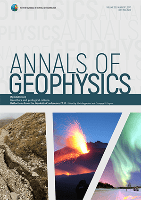
ANNALS OF GEOPHYSICS
Bridging Theory and Practice in Geophysical StudiesANNALS OF GEOPHYSICS is a prestigious open access journal dedicated to the advancement and dissemination of research in the field of geophysics. Published by the IST NAZIONALE DI GEOFISICA E VULCANOLOGIA in Italy, this journal has embraced open access since its inception in 1948, promoting wide accessibility to cutting-edge research. With an impressive Scopus ranking, placing it in the 52nd percentile within Earth and Planetary Sciences for the category of Geophysics, the journal serves as a vital platform for scholars, researchers, and practitioners seeking to explore the intricate phenomena of our planet. Covering a diverse range of topics in the geophysical community, the ANNALS OF GEOPHYSICS invites contributions that push the boundaries of our knowledge and understanding of geophysical processes, aiding in the development of innovative solutions to urgent environmental challenges. Published continuously from 2002 to 2024, the journal’s commitment to quality and rigor is reflected in its Q3 quartile ranking for 2023, making it a notable resource for the academic community.
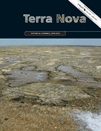
TERRA NOVA
Connecting Disciplines for a Deeper Understanding of EarthTERRA NOVA, published by WILEY, is a leading journal in the field of Geology, with a remarkable impact within the academic community. With the ISSN 0954-4879 and E-ISSN 1365-3121, the journal has been a pivotal platform for innovative research since its inception in 1989 and will continue its influence through to 2024. Ranked in the top tier (Q1) of its category for 2023, TERRA NOVA holds an esteemed position with a Scopus ranking of 67 out of 321 in Earth and Planetary Sciences, showcasing its dedication to high-quality, impactful scientific discourse. The journal covers a diverse range of topics within geology, providing valuable insights for environmental scientists, geologists, and industry professionals. By fostering an interdisciplinary approach, TERRA NOVA remains committed to advancing the understanding of geological processes and their implications for society. With a dedicated readership of researchers, professionals, and students, this journal is essential for those looking to stay abreast of the latest developments and trends in the field.
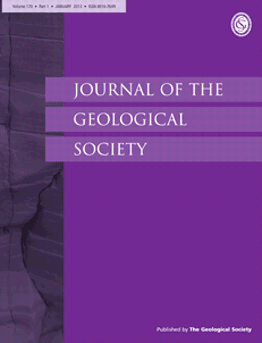
JOURNAL OF THE GEOLOGICAL SOCIETY
Cultivating Expertise in Earth Sciences for GenerationsJOURNAL OF THE GEOLOGICAL SOCIETY, published by GEOLOGICAL SOC PUBL HOUSE, is a premier academic journal dedicated to advancing the field of geology. With a rich history dating back to 1845 and continuously published until 2024, this journal caters to a diverse audience of researchers, professionals, and students involved in earth sciences. The journal is recognized for its high impact factor, situating it in the top Q1 category in the field of geology, as indicated by its impressive Scopus rank of #49 out of 321, positioning it at the 84th percentile in Earth and Planetary Sciences. This esteemed scholarly platform promotes rigorous peer-reviewed research, ensuring that novel findings contribute to the global geological discourse. Although it operates under a subscription model, the journal's archive offers valuable insights for anyone pursuing excellence in geological research. The JOURNAL OF THE GEOLOGICAL SOCIETY stands as a vital resource for disseminating scientific knowledge and fostering educational growth within the field.

Czech Polar Reports
Enhancing Understanding of Polar EcosystemsCzech Polar Reports, published by Masaryk University Press, is a pivotal academic journal dedicated to advancing research in the realms of Agricultural and Biological Sciences, Earth and Planetary Sciences, and Environmental Science. Since its inception in 2014, this peer-reviewed journal has established a solid reputation as a medium for disseminating innovative research, particularly in the unique environmental contexts of polar regions. With an impressive Q3 ranking in its designated categories by 2023, Czech Polar Reports serves as a valuable resource for researchers, professionals, and students seeking to deepen their understanding of ecological and climatic changes in these critical areas. While the journal is not fully Open Access, it aims to contribute substantially to ongoing scholarly dialogues and provide insights that are essential for sustainability and climate action. The journal's commitment to fostering interdisciplinary research underscores its importance in a rapidly evolving scientific landscape.
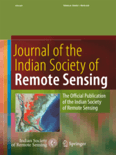
Journal of the Indian Society of Remote Sensing
Advancing Remote Sensing Knowledge for a Sustainable FutureJournal of the Indian Society of Remote Sensing, published by SPRINGER, stands as a prominent contribution to the fields of Earth and Planetary Sciences and Geography, Planning and Development. With an ISSN of 0255-660X and an E-ISSN of 0974-3006, this esteemed journal has been in circulation since 1973, showcasing a rich repository of research and advancements in remote sensing applications, methodologies, and technologies, specifically within the Indian context and beyond. The journal's impact is underscored by its placement in the Q2 category of both Earth and Planetary Sciences and Geography as of 2023, ranking impressively in the Scopus database with significant percentiles. With the intent to bridge the gap between theory and practical application, it invites scholars, researchers, and professionals to contribute innovative studies that enhance our understanding of remote sensing and its implications in various domains. The Journal of the Indian Society of Remote Sensing is a vital resource for anyone looking to remain at the forefront of research in this dynamic field.
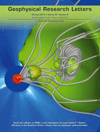
GEOPHYSICAL RESEARCH LETTERS
Advancing Earth Science, One Letter at a Time.GEOPHYSICAL RESEARCH LETTERS is a renowned academic journal published by the American Geophysical Union that plays a pivotal role in advancing the field of Earth and Planetary Sciences. Established in 1974, this esteemed journal provides a platform for the latest research and innovations in geophysics, including but not limited to, solid earth, atmospheric sciences, and oceanography. With its impressive ranking of #7 out of 165 in Geophysics and #13 out of 195 in General Earth and Planetary Sciences according to Scopus, and being categorized in the Q1 quartile for both fields in 2023, it is a leading choice for academic and professional researchers alike. While GEOPHYSICAL RESEARCH LETTERS does not currently offer open access, it remains committed to disseminating high-quality, peer-reviewed scientific literature. With ongoing contributions expected through to 2024, this journal is essential for those who seek to deepen their understanding and engage with cutting-edge developments in geophysical research. Its influence and reach underscore its significance in shaping the future of geophysical inquiry.

Revue Internationale de Geomatique
Elevating Standards in Geomatics MethodologiesRevue Internationale de Geomatique (ISSN: 1260-5875, E-ISSN: 2116-7060) is a prestigious journal published by TECH SCIENCE PRESS, dedicated to advancing the field of geomatics. This journal serves as a vital platform for disseminating significant research findings, cutting-edge methodologies, and innovative applications within the realm of spatial data and technology. With an emphasis on interdisciplinary studies, it fosters collaboration among researchers, professionals, and students across various domains, including environmental science, urban planning, and geographic information systems (GIS). Although not an open-access journal, Revue Internationale de Geomatique maintains a rigorous peer-review process ensuring the publication of high-quality articles that contribute to the evolving landscape of geomatics. Given its relevance and commitment to scholarly excellence, this journal is a crucial resource for advancing knowledge and practices in the ever-growing field of spatial information science.
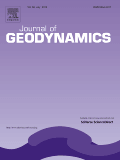
JOURNAL OF GEODYNAMICS
Transforming Understanding of Earth’s Dynamic ProcessesJOURNAL OF GEODYNAMICS is a leading scholarly journal published by PERGAMON-ELSEVIER SCIENCE LTD, focusing on the dynamic interactions of geological and geophysical processes. With a distinguished impact factor reflective of its significance in the field, this journal operates from the United Kingdom and has been an essential platform for innovative research since its inception in 1984. It encompasses a wide range of topics within Earth-Surface Processes and Geophysics, consistently ranking in the upper quartiles (Q1 and Q2) as per the 2023 category rankings, thereby providing a robust avenue for researchers seeking to contribute to high-impact advancements in these fields. The journal is indexed in Scopus, bolstering its visibility with admirable ranks, including 44th out of 165 in Geophysics. While it does not currently offer open access options, the journal remains pivotal for academics aiming to deepen their understanding of geodynamic mechanisms and foster interdisciplinary collaboration. For over three decades, the journal has served as a cornerstone resource for professionals, researchers, and students eager to explore and publish groundbreaking findings in geoscience.

Geofisica Internacional
Elevating Research Standards in Geophysics Since 1975Geofisica Internacional, an esteemed academic journal published by the Instituto de Geofísica at UNAM, Mexico's prestigious National Autonomous University, has been a pivotal platform for advancing the field of geophysics and energy studies since its inception in 1975. This Open Access journal aims to disseminate high-quality research findings, making significant contributions to our understanding of Earth's processes and energy resources. With a current impact factor that situates it in the Q3 category for both Energy (miscellaneous) and Geophysics, it provides a continuous dialogue for researchers, professionals, and students interested in the intersection of these critical areas. Based in Mexico City and publishing articles that span various geophysical disciplines, Geofisica Internacional is indispensable for anyone seeking to stay at the forefront of environmental and energy research.

Science of Remote Sensing
Elevating Scientific Discourse in Earth and Forestry StudiesScience of Remote Sensing, published by Elsevier, is a premier open-access journal that has been at the forefront of interdisciplinary research since its inception in 2020. With an impressive impact factor and its status in the Q1 quartile category for both Earth and Planetary Sciences and Forestry, this journal effectively caters to a diverse audience, including researchers, professionals, and students interested in the latest developments in remote sensing technologies and their application across varied domains. Located in the Netherlands, the journal provides a collaborative platform for scientific discourse, ensuring that impactful research is easily accessible to the global community. As it converges its focus through to 2024, Science of Remote Sensing continues to promote innovation and excellence, establishing itself as a vital resource for advancing knowledge in both the agricultural and environmental sectors. With a robust ranking (Rank #6 in Forestry and Rank #8 in General Earth and Planetary Sciences), it is well-positioned to contribute significantly to ongoing scientific advancements.